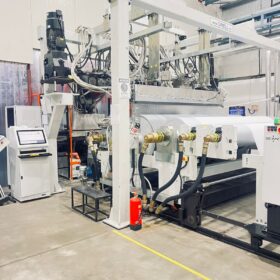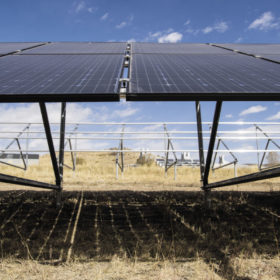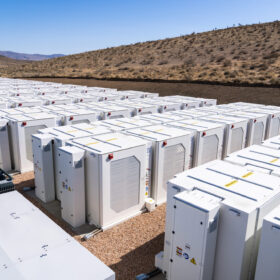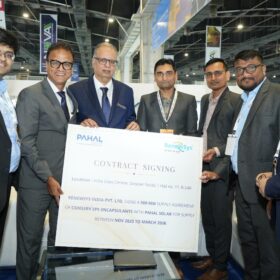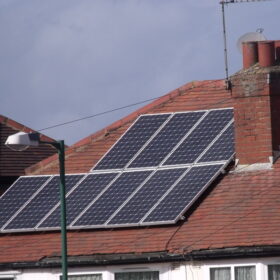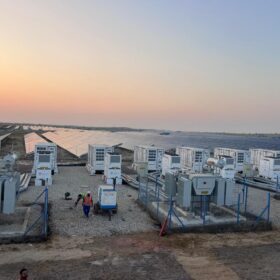Sachin Tendulkar invests in solar EPC firm Suntek Energy
Cricket legend Sachin Tendulkar has invested INR 3.6 crore in Hyderabad-based solar EPC company Suntek Energy Systems, acquiring a 2% stake in the firm.
ArcelorMittal to add 1 GW of solar and hybrid renewable energy capacity in India
ArcelorMittal has announced three new renewable energy projects in India totaling 1 GW of nominal solar and wind capacity. Upon completion, the projects will double the company’s renewable energy capacity in India to 2 GW and increase its global total to 3.3 GW.
Saatvik Green commissions 2 GW EPE film manufacturing facility, secures INR 486 crore solar module order
Saatvik Green Energy has commissioned a 2 GW in-house EPE film manufacturing facility at its Ambala campus in Haryana. The company also announced that its arm, Saatvik Solar Industries, has received and accepted a solar PV module supply order aggregating to ₹486 crore from a renowned private-sector power producer and EPC player.
Emmvee starts production at 2.5 GW solar module line in Karnataka
With the new line becoming operational, the company’s total solar module manufacturing capacity has increased to 10.3 GW.
Bondada Engineering secures INR 945.10 crore solar EPC order from NLC India Renewables
Bondada Engineering Ltd has received a Letter of Award (LoA) from NLC India Renewables Ltd (NIRL) for the balance-of-system (BoS) package for 810 MW of solar power projects in Rajasthan.
Luminous Power Technologies secures 350 MW solar project under PM-KUSUM Scheme
The 350 MW solar power project, comprising multiple PV plants of varying capacities across several districts of Rajasthan, will be executed in a staggered manner starting in the first quarter of 2026.
China files WTO complaint against Indian solar subsidies
China’s Ministry of Commerce has raised a complaint at the World Trade Organization (WTO) regarding India’s solar subsidies, claiming they give the country’s domestic industry an unfair advantage and harm Chinese interests.
Odisha tenders 500 MWh standalone BESS projects
Solar Energy Corp. of India Ltd (SECI), on behalf of GRIDCO, has invited proposals for setting up six grid-connected standalone battery energy storage system (BESS) projects with a cumulative storage capacity of 500 MWh (125 MW x 4 hours) in Odisha.
Coal India invites bids for 20 MW floating solar project in Uttar Pradesh
Coal India Ltd (CIL) has invited bids for setting up a 20 MW (AC) grid-connected floating solar PV power plant at Chilwa Taal in the Gorakhpur district of Uttar Pradesh.
Pahal Solar signs 500 MW encapsulant supply agreement with RenewSys
Pahal Solar has signed an agreement with RenewSys for the supply of 500 MW of EPE (EVA–POE–EVA co-extruded film) encapsulants to be used in its solar module manufacturing operations. The deliveries are scheduled to take place between Nov. 2025 and March 2026.


